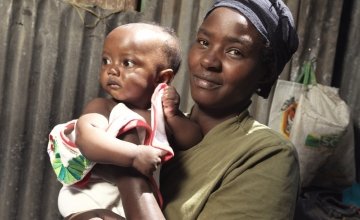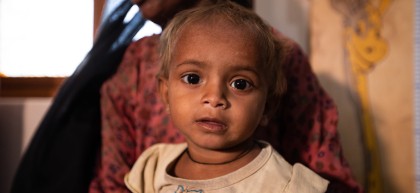
Knowledge Hub
What is stunting? And why should we know about it?

Significantly stunted growth and development, caused by chronic undernutrition, threatens almost a quarter of children around the world. We are exploring the condition and its impacts on children’s lives and futures as healthy, productive human beings - just one of the many reasons why we are committed to helping babies 'Through to 2'.
Put simply, stunting is defined as lower than average height for a child’s age, but the real-world impacts ripple well beyond a physical measurement.
Beyond height, stunting can negatively affect a child’s brain function, organ development, and immune system – limiting their future productivity, and even that of their children. In effect, stunting can live on through the generations like a sad inheritance.
Luckily, there’s something we can do about it. Stunting can be prevented if the essential steps are taken in the roughly 1,000 days between pregnancy and a child’s second birthday. The first two years of a child's life are so important for their future, and with your support, we can help provide the essential building blocks for a happy, healthy life. If babies don't have the proper food and care during that special time (the first two years), the effects can be devastating. Nearly half of child deaths worldwide are linked to malnutrition. And even for those who do survive, many must live with the consequences: they are likely to be small for their age, perform less well at school and be more susceptible to illness.

What causes stunting?
There are many different factors that contribute to child stunting, which is one of the reasons that preventing the condition calls for comprehensive action. For example, availability of diverse foods, the way a child is fed and cared for, access to clean drinking water, proper health care, and hygiene and sanitation can all affect a child’s development. Indirectly linked, yet still very important are the factors of gender equality, engagement of men and fathers, income-earning opportunities, food prices, and climate events. Children who are stunted are also more likely to have stunted children, and are prone to becoming overweight as adults – posing another health risk.

The vicious cycle of stunting
After a child is born, it is important that both the mother and baby receive post-natal care, and that the infant receives its mother’s breast milk. Breast milk strengthens an infant’s immune system, and gives the child the nutrients needed to grow. While low birthweight can predispose a child to stunting later in life, good nutrition and care during the first two years of life can help prevent it.
How to prevent stunting?
There’s no simple solution to preventing stunting. However, focusing on the window of time between a mother’s pregnancy and when the child turns two, is key to ensuring healthy development. While the amount of food a child receives is a large piece of the puzzle, a diversified diet can be equally, if not more, important.

How Concern is helping
'Through to 2' is committed to helping babies past this crucial 1,000 day mark. We do this by focusing on the building blocks of a baby's healthy future: that is, 24 months of milestones. With your support, we are able to provide antenatal care, nutrition and support for mothers to ensure that babies get what they need in the womb; appropriate medical care for the birth; critical vitamins and nutrients they require during the first few months of their life; and the coninuous care needed as they grow older. Thanks to your support, they'll have the chance of the best possible start in life - allowing their brains and bodies to develop so they have the all-important chance of fulfilling their potential.





